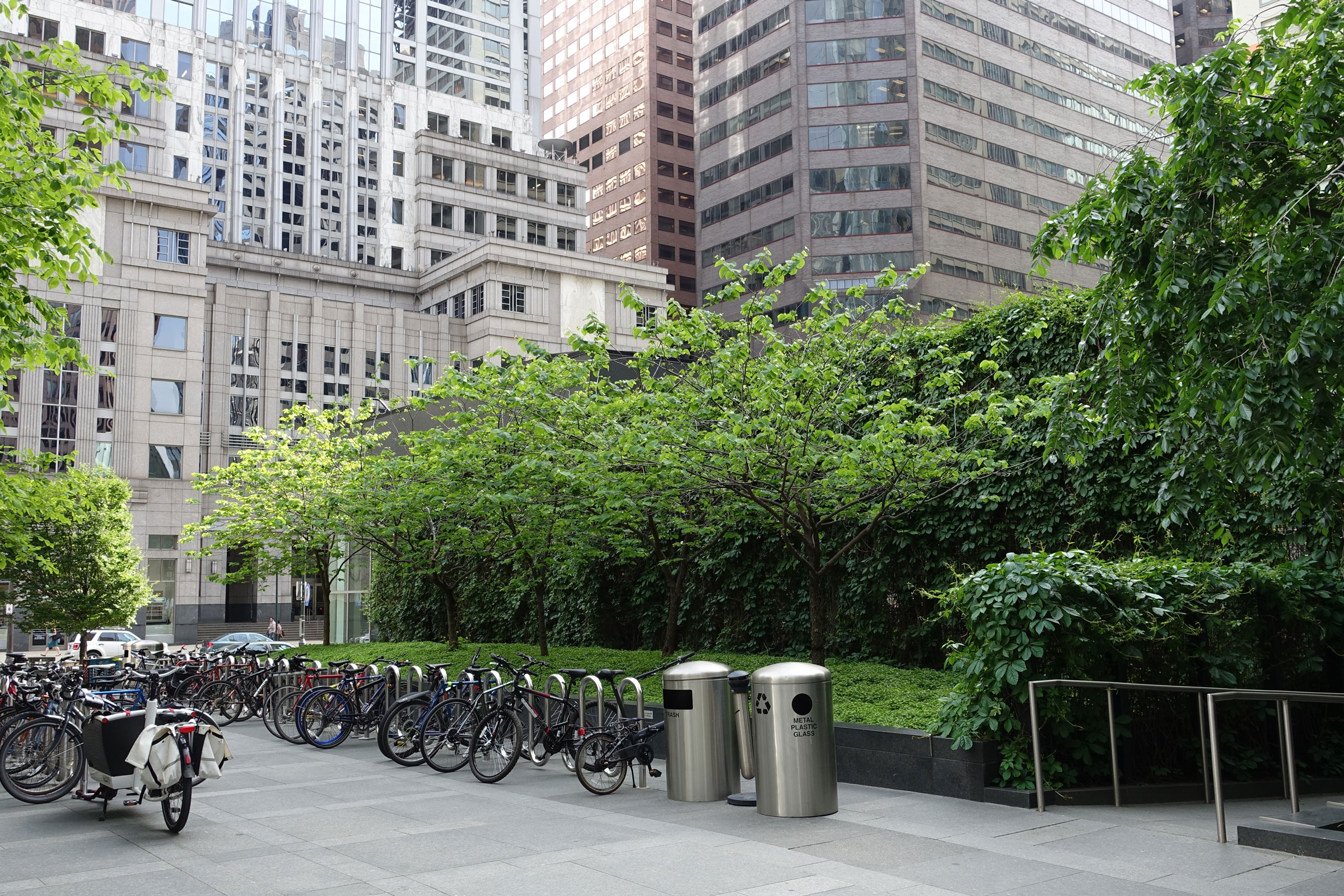Story at a glance:
- Heat islands are urbanized areas that experience higher temperatures than outlying areas.
- Urban heat islands increase energy demands and worsen air pollution—effecting both humans and the ecosystem.
- Cities can prevent the urban heat island effect by investing in solar reflective infrastructure, installing green roofs and living walls, and more.
Approximately 80% of the US lives in cities, and more than 41 million people live in urban heat islands—or areas in cities where both daytime and nighttime temperatures are several degrees higher than in nearby outlying regions.
“Urban heat island effect adds to the heat in cities with pavement and buildings that are in close proximity to one another, causing temperatures to increase up to 20 degrees higher than surrounding areas,” Charlene Mortale, division vice president of project management at greenscreen, previously wrote for gb&dPRO.
Let’s explore urban heat islands, what causes them, how they affect their surroundings, and actions cities can take to address, mitigate, and prevent the urban heat island effect.
What is the Urban Heat Island Effect?
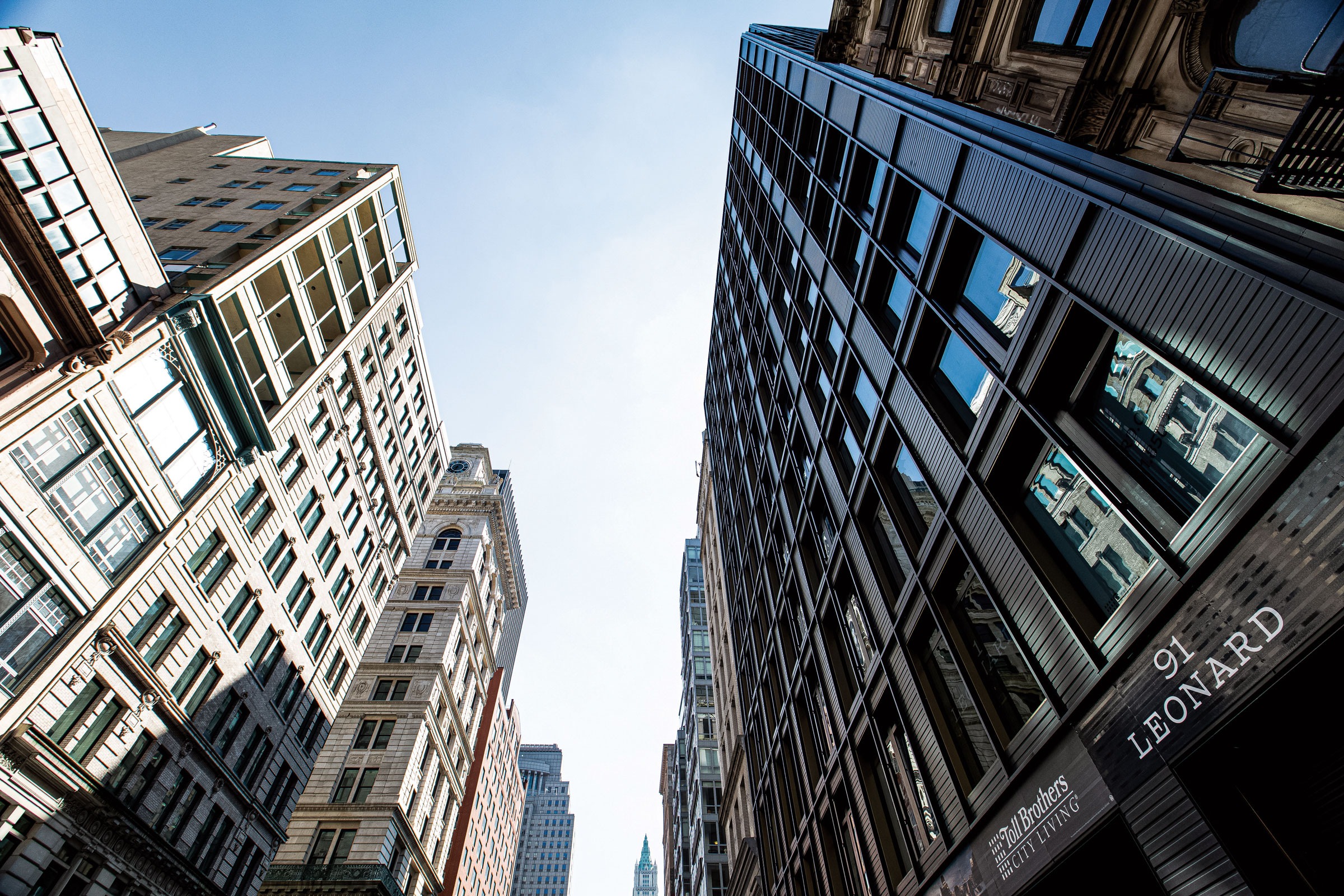
The urban heat island effect is a man-made phenomena in which cities and other urban areas experience higher temperatures than outlying areas. Photo courtesy of Agrob Buchtal
At its core the urban heat island effect describes the phenomenon by which urbanized areas experience higher temperatures than outlying rural areas, both during daytime and nighttime hours. On average temperatures in urban heat islands are 1 to 7°F higher during the day and 2 to 5°F higher at night than temperatures in outlying areas, according to the EPA.
“The urban, built environment creates heat islands from its concentrations of concrete, steel, and other building materials that absorb solar energy and then radiate that collected energy into the local environment as heat,” Don Haynes, an environmental and sustainability manager for Florim USA, wrote in a previous article for gb&dPRO. Several heat islands of varying intensities may exist within the same urban space as a result of uneven distribution of heat-absorbing materials.
Technically the urban heat island effect is caused by an excess of dark-colored surfaces that absorb and re-release a large portion of the sun’s thermal energy, combined with a dearth of vegetated green or blue spaces that would reflect solar energy and provide cooling by way of natural processes. But other factors contribute to urban heat islands, too.
What Causes the Urban Heat Island Effect?
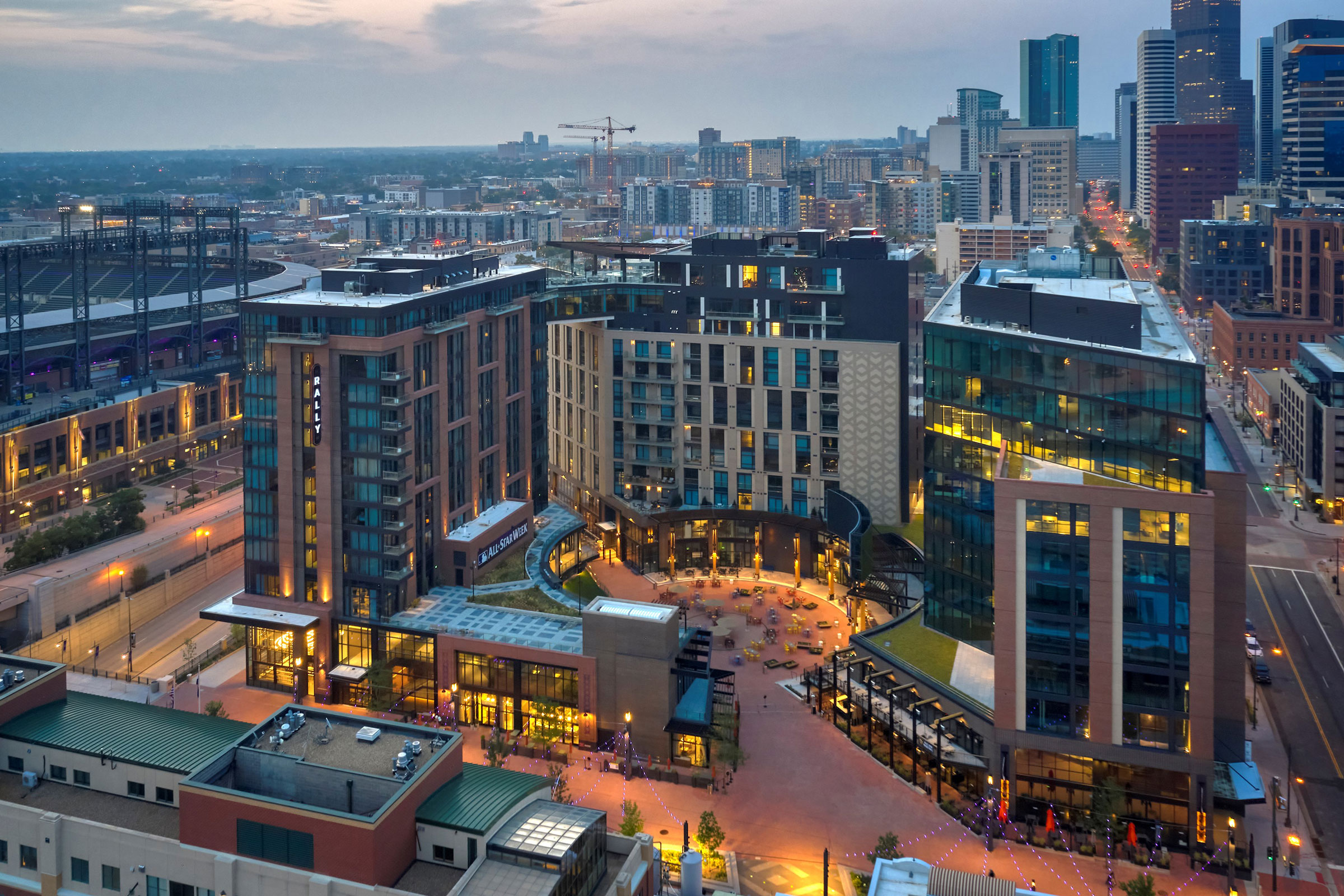
The urban heat island effect is caused by high concentrations of highly absorptive building materials, a lack of natural landscapes, waste heat from human activities, urban geometry, and local weather factors. Photo by Moss Photography
Urban heat islands are caused by a variety of compounding factors, including:
- Urban materials. Traditional urban cityscapes feature a high concentration of dark-colored building materials (asphalt, steel, brick, etc.) and elements that do not reflect but absorb solar energy throughout the day and gradually re-emit said energy at night.
- Lack of natural landscapes. Urban heat islands are largely caused by a lack of natural vegetated landscapes that would otherwise help to regulate temperatures by way of providing shade, transpiring water from leaves, or evaporating surface water from lakes, ponds, rivers, streams, and other water bodies.
- Waste heat. Waste heat generated as a result of human activities like the operation of vehicles, air conditioning units, and buildings in general also contributes.
- Urban geometry. How buildings are organized and spaced in a city also can lead to urban heat islands, as these influence wind flow and determine how much solar energy urban materials absorb and re-emit; cities with many tall buildings and narrow streets, for example, create “urban canyons” that block wind and inhibit buildings’ ability to effectively release heat.
- Local weather. Existing weather patterns also influence the creation of urban heat islands; clear, calm weather conditions encourage extreme heat by maximizing solar energy absorption and minimizing the amount of heat that may be carried away, whereas strong winds and overcast skies help to discourage heat island formation.
Climate Change & the Urban Heat Island Effect
While climate change in and of itself is not a direct cause of the urban heat island effect, it does amplify its severity, according to the IPCC Sixth Assessment Report from 2022. Extreme heat events like heat waves are already increasing in both severity and frequency around the globe as a result of anthropogenic climate change, exacerbating the conditions of existing urban heat islands and putting millions at a higher risk of heat-related illnesses.
Why is the Urban Heat Island Effect Bad?
While the difference of a few degrees may seem inconsequential, the urban heat island effect is no trivial matter. Some of the problems associated with urban heat islands include:
Increased Energy Usage
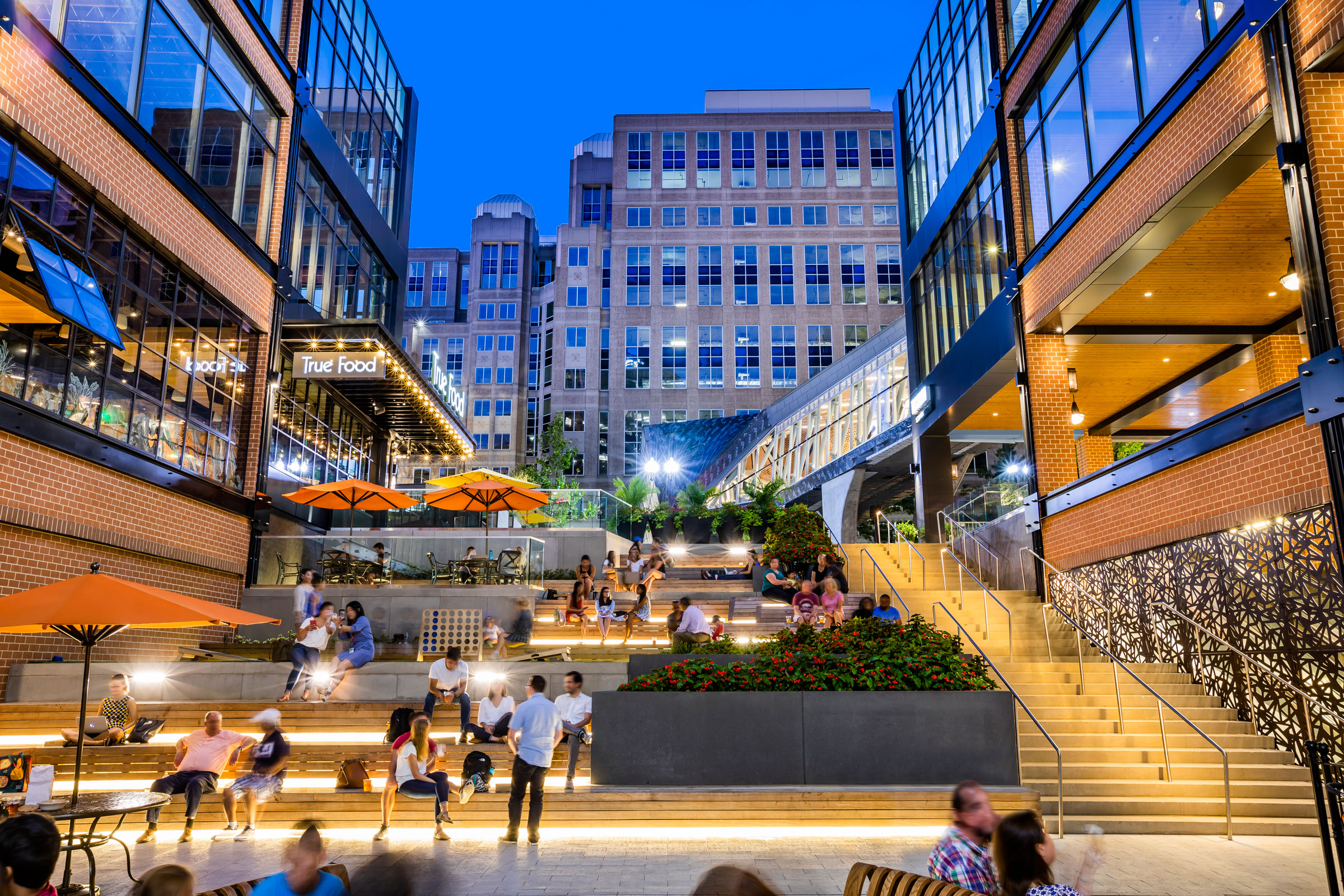
The urban heat island effect leads to increased air conditioning usage that puts undue strain on municipal energy grids and can potentially lead to devastating power outages. Photo by David Madison Photography
Higher temperatures lead to an increased need for refrigeration and air conditioning in urban buildings—especially when most buildings are not designed to passively ventilate themselves. As a general rule the electrical demand for air conditioning increases 1 to 9% for every 2°F increase in outdoor temperatures, according to an EPA assessment of case studies spanning multiple countries.
This increased demand for electricity not only results in higher operating costs but can also overload municipal energy grids and cause urban areas to experience power outages during times of peak demand (which typically occur on weekday afternoons), greatly inflating the risk of heat-related illnesses. This has forced many utility providers in urban heat islands to institute rolling brownouts—or temporary, rotating reductions in power—and even blackouts to avoid total, long-term losses of power.
Most urban areas generate the bulk of their power by way of burning fossil fuels, and this increased demand for electricity contributes to rising global temperatures and the subsequent worsening of the urban heat island effect, effectively creating a positive feedback loop that gets more and more severe.
Poorer Air Quality

The urban heat island effect causes air pollutants to gather in high concentrations and increases the production of ground-level ozone. Photo courtesy of Henning Larsen
One of the most overlooked impacts of the urban heat island effect is the effect it has on outdoor air quality and air pollution. Extreme heat causes pollutants like carbon monoxide, nitrogen dioxide, and volatile organic compounds to gather during the night in high concentrations, worsening the production of ground-level ozone—an inorganic compound that is considered a pollutant in its own right—the next day.
High levels of exposure to ozone can cause coughing, shortness of breath, headaches, and fluid in the chest, with chronic exposure increasing the risk of developing asthma and other respiratory conditions.
Heat-Related Illnesses
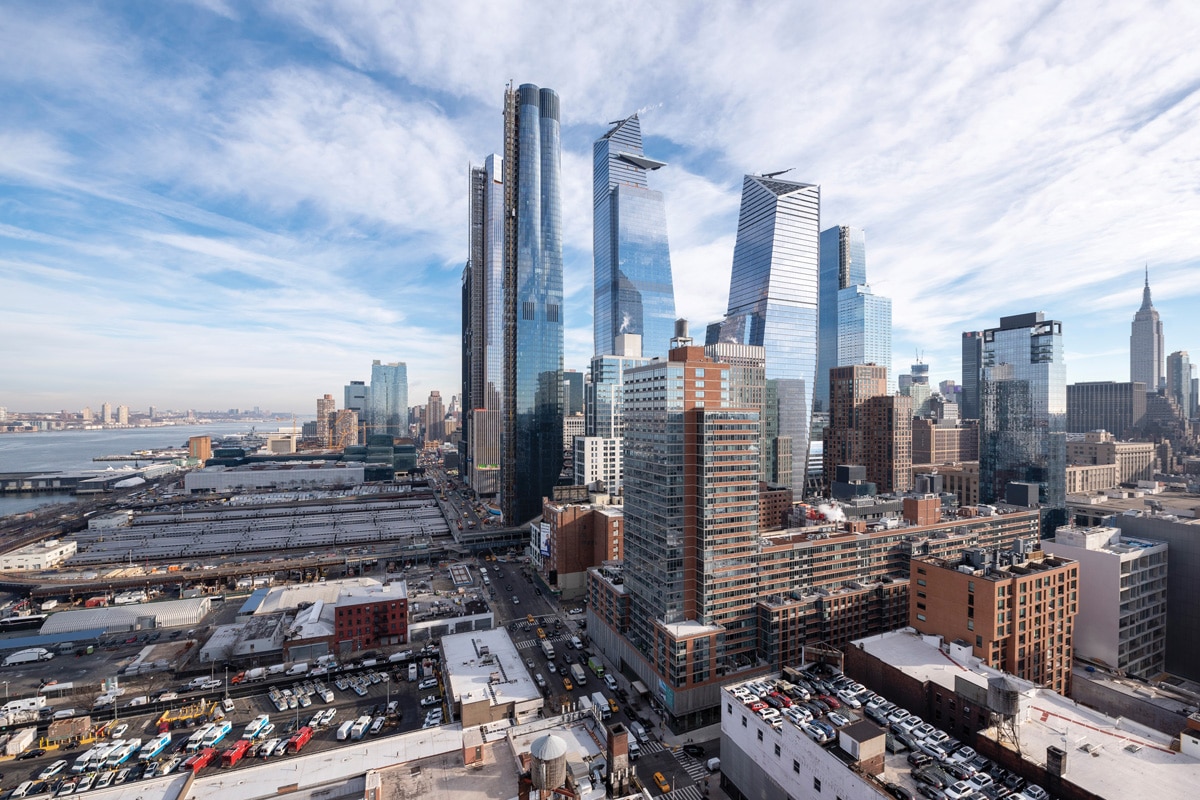
The urban heat island effect puts millions of people at risk of developing heat-related illnesses like heat stroke and heat exhaustion. Photo by Timothy Schenck
As the temperature of urban spaces rises so does the risk of non-fatal heat stroke, heat cramps, heat exhaustion, respiratory difficulties, and even heat-related deaths. Extreme heat is so dangerous that it is considered the single deadliest natural hazard in the US, with more than 1,700 people dying from heat-related complications in 2022 alone.
What’s more, heat-related illnesses do not impact all populations equally, with the following persons being the most at risk during periods of high heat:
- Young children. Because of their smaller bodies, developing respiratory systems, and elevated breathing rates, children tend to be more susceptible to extreme heat and are at a higher risk of developing asthma and other respiratory diseases caused by chronic exposure to ozone and smog.
- Older adults. As perhaps the most at-risk population for heat-related illnesses, older adults are highly susceptible to heat stroke and other heat-related illnesses because they are more likely to have limited mobility, to be in poor health, live on reduced incomes, and are in general more sensitive to extreme heat.
- People in poor health. People who have preexisting medical conditions, chronic conditions, mobility restraints, disabilities, and those taking certain medications are at an elevated risk during extreme heat events.
- People who work outdoors. Unsurprisingly, people who work outdoors for long periods of time (and especially those whose jobs involve heavy exertion) are extremely at risk for heat-related illnesses—particularly heat stroke and heat exhaustion—as they are less likely to have access to adequate cooling measures and are regularly exposed to ozone air pollution.
- Low-income households. Because low-income persons are more likely to live in small, poorly ventilated homes and apartments that may or may not have functioning air conditioning, they are at a higher risk for developing heat-related illnesses.
- People of color. Due to the systemic inequalities that have long influenced settlement patterns, acquisition of wealth, and access to housing (e.g. redlining), people of color are more likely to live in urban heat islands and are therefore more likely to suffer from heat-related illnesses.
For urban heat island mitigation and prevention efforts to be successful and equitable, they must work to ensure all populations are protected from the effects of extreme heat.
Reduced Ecosystem Health
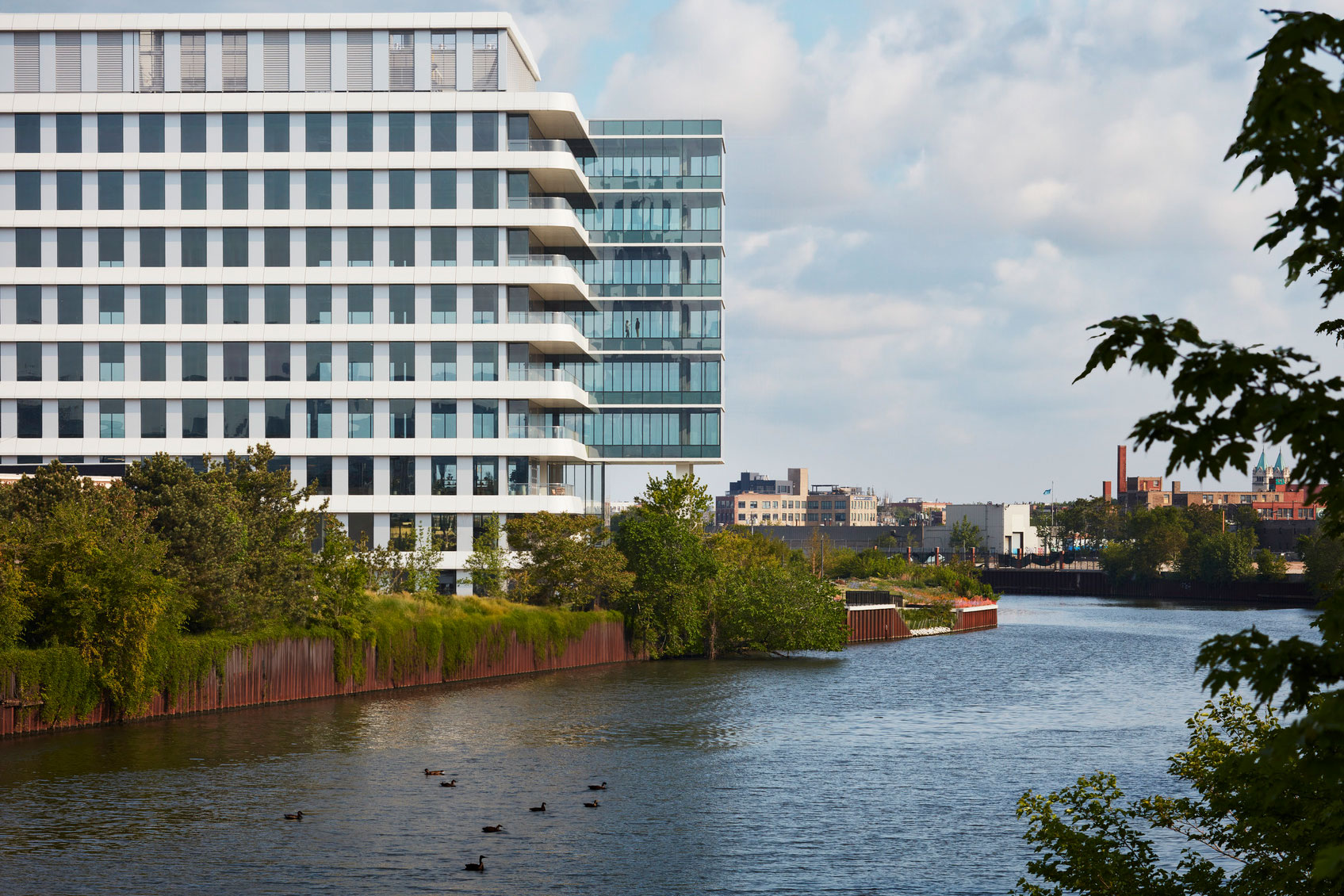
Hot pavement and rooftops transfer their excess heat to stormwater when it rains. This causes the temperature of nearby bodies of water to rise at a rapid rate and cause shock or even lead to the death of aquatic organisms. Photo by Kendall McCaugherty
Urban heat islands also have a negative impact on ecosystem health, especially when it comes to the health of nearby bodies of water. Hot rooftops and paved surfaces rapidly transfer their excess heat to stormwater, which then drains into storm sewers before emptying out into lakes, ponds, streams, and rivers.
This warmed stormwater causes the ambient temperature of urban water bodies to increase—sometimes by as much as 30°F—within a relatively short time frame. Such rapid temperature fluctuations are particularly stressful to aquatic organisms and can result in shock or even mass fish kills, leading to reduced ecosystem biodiversity.
How to Prevent the Urban Heat Island Effect
There are a number of actions the EPA recommends cities and urban planners take to help mitigate, reverse, and prevent the urban heat island effect, including:
Invest in Green Infrastructure
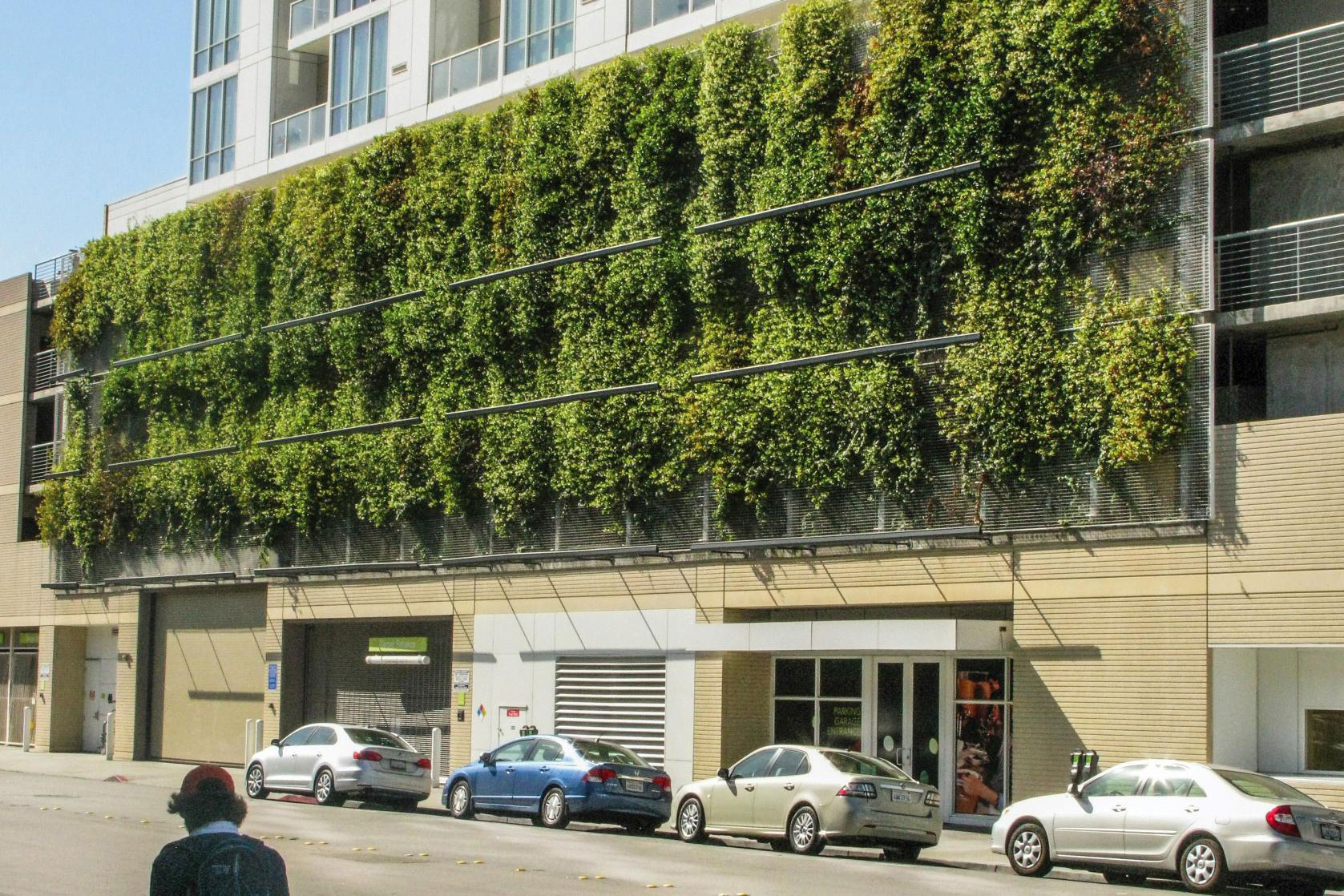
Green facades and other examples of green infrastructure help cool the air via evapotranspiration and reduce the air conditioning needs of buildings. Photo courtesy of Greenscreen
Another way cities can help mitigate the heat island effect is by investing in green roofs, living walls, and green facades—otherwise known as green infrastructure (GI)—for both new construction and existing buildings.
Green Roofs
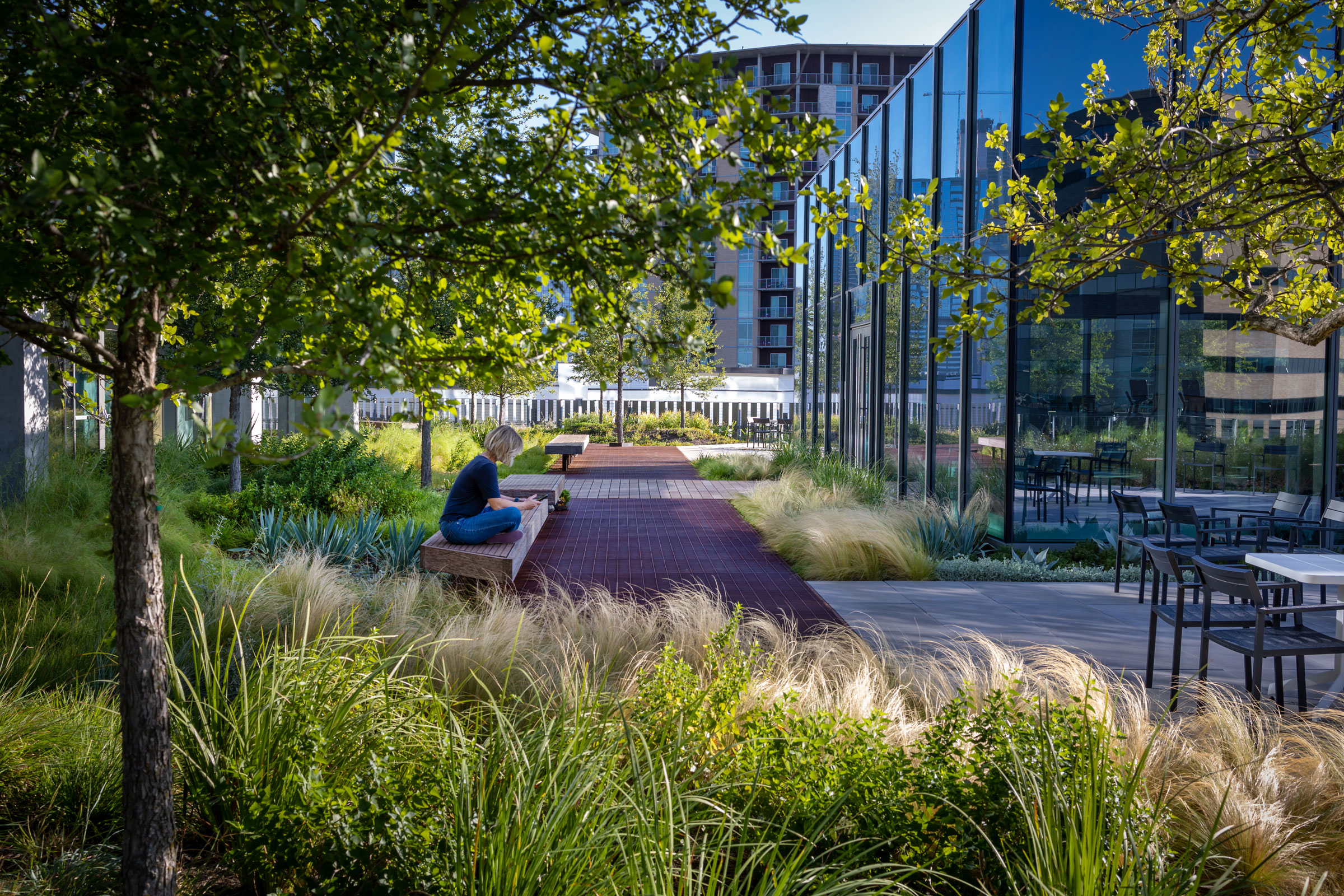
RiverSouth in Austin features a green roof that both keeps the building cool and gives people a place to escape. Photo by Casey Dunn
Green roofs—or roofs with a vegetative layer—help remove heat from the air and can be 30 to 40℉ cooler than conventional rooftops, reducing city-wide ambient temperatures by as much as 5℉, according to the EPA. This is primarily thanks to plants’ ability to naturally cool the air as they release trapped moisture from their leaves, a process known as evapotranspiration. “The plant evapotranspiration process is a highly efficient cooling ‘engine’ and essential for our current and future urban dwellings, especially as urban temperatures continue to rise significantly over the coming years,” Anna Zakrisson previously wrote for gb&dPRO.
Green roofs also help passively regulate interior temperatures, reducing a building’s air conditioning use by as much as 75%. Some of the world’s most sustainable cities, like Copenhagen, have already realized just how beneficial green roofs can be and enacted mandatory green roof policies for all new and existing buildings with suitably pitched roofs.
Living Walls & Green Facades
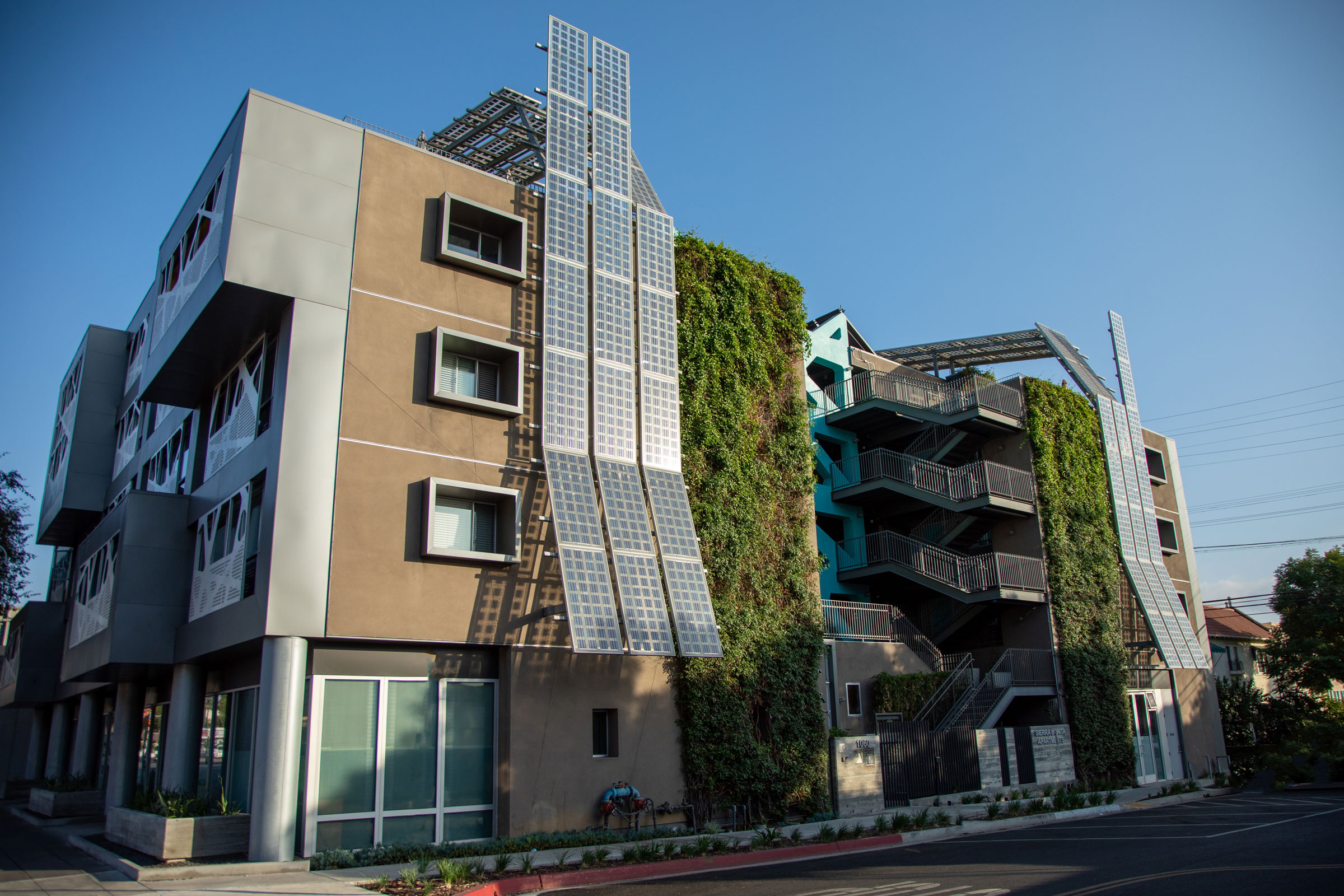
Green walls bring life to the Sierra Bonita Apartments. Photo courtesy of Greenscreen
Living walls and green facades—or walls that essentially function as vertical planters—can also aid in reducing temperatures by intercepting solar energy and providing evaporative cooling. “Green infrastructure is a multi-pronged approach that allows for better urban living conditions. It has the capacity to cool our cities thus protecting us from the urban heat island effects and allowing for energy savings,” Zakrisson says. “GI can introduce more biodiversity, reestablish the natural water cycle and help reduce volumes of wastewater reaching the sewage treatment plants.”
Greenscreen, for example, is a leading producer of innovative, versatile, and aesthetically pleasing green infrastructure solutions including trellis walls, columns, infill/overhead, fencing, and more.
Ground-Level Green Spaces & Tree Cover
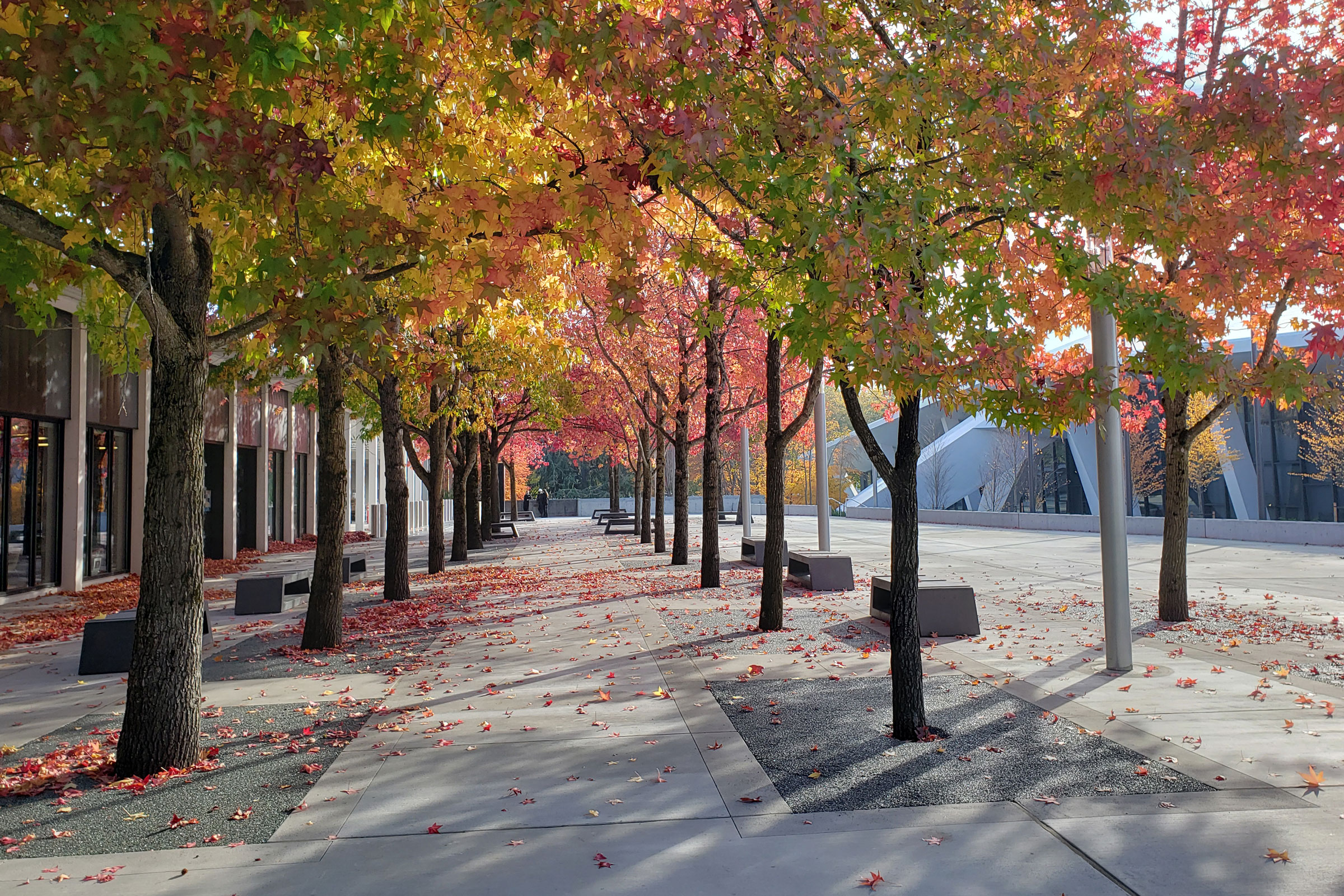
Expanding ground-level green spaces and tree cover is crucial to mitigating the urban heat island effect. Photo courtesy of Swift Company
Ground-level green spaces like parks, gardens, and undeveloped natural habitats also reflect solar energy and lower temperatures via evapotranspiration, as does the planting of trees along roadways and sidewalks, which has the added benefit of providing shade to pedestrians and building surfaces.
“Urban trees provide a canopy, and wildlife corridors, mitigate the heat island effect, and offer neglected communities greater social justice,” Jay Valgora, founder and principal of STUDIO V, previously wrote for gb&d.
For cities in climates with temperature extremes, the planting of deciduous trees is recommended, as their loss of leaves during the winter allows street-level buildings and storefronts to benefit from the sun’s thermal heat energy, reducing heating loads. Care should be taken to ensure trees are not planted too close together so as to avoid creating extremely dense canopies that trap air and pollutants at street level.
Solar Reflective Coatings & Cool Infrastructure

Light-colored cool roofs and solar reflective coatings help prevent the urban heat island effect by replacing traditional dark-colored surfaces that absorb and re-release a large portion of solar heat energy. Photo courtesy of Westcoat
That said, it isn’t feasible to cover an entire city in green spaces and vegetation, nor can every roof support a garden, but that doesn’t mean those spaces left uncovered can’t do their part in reflecting solar energy. Cool roofs are a low-maintenance and more versatile alternative to green roofs, of which use solar reflective coatings to redirect solar energy instead of absorbing it.
“Just as wearing light-colored clothing can help keep a person cool on a sunny day, cool roofs use solar-reflective surfaces to maintain lower roof temperatures,” Lon Bauer, product development manager at APV Engineered Coatings, previously wrote for gb&d. Thanks to their use of reflective coatings, light-colored cool roofs can stay at least 50℉ cooler than traditional dark-colored roofs, according to data gathered by the DOE.
Solar reflective coatings can be applied to more than just roofs, too. Roads, sidewalks, and other paved surfaces can also benefit from these coatings. APV Engineered Coatings and Westcoat, for example, are leading manufacturers of protective coatings and offer several solar reflective coatings with high SRI values that may be applied to a multitude of surfaces.
Smart Growth Practices
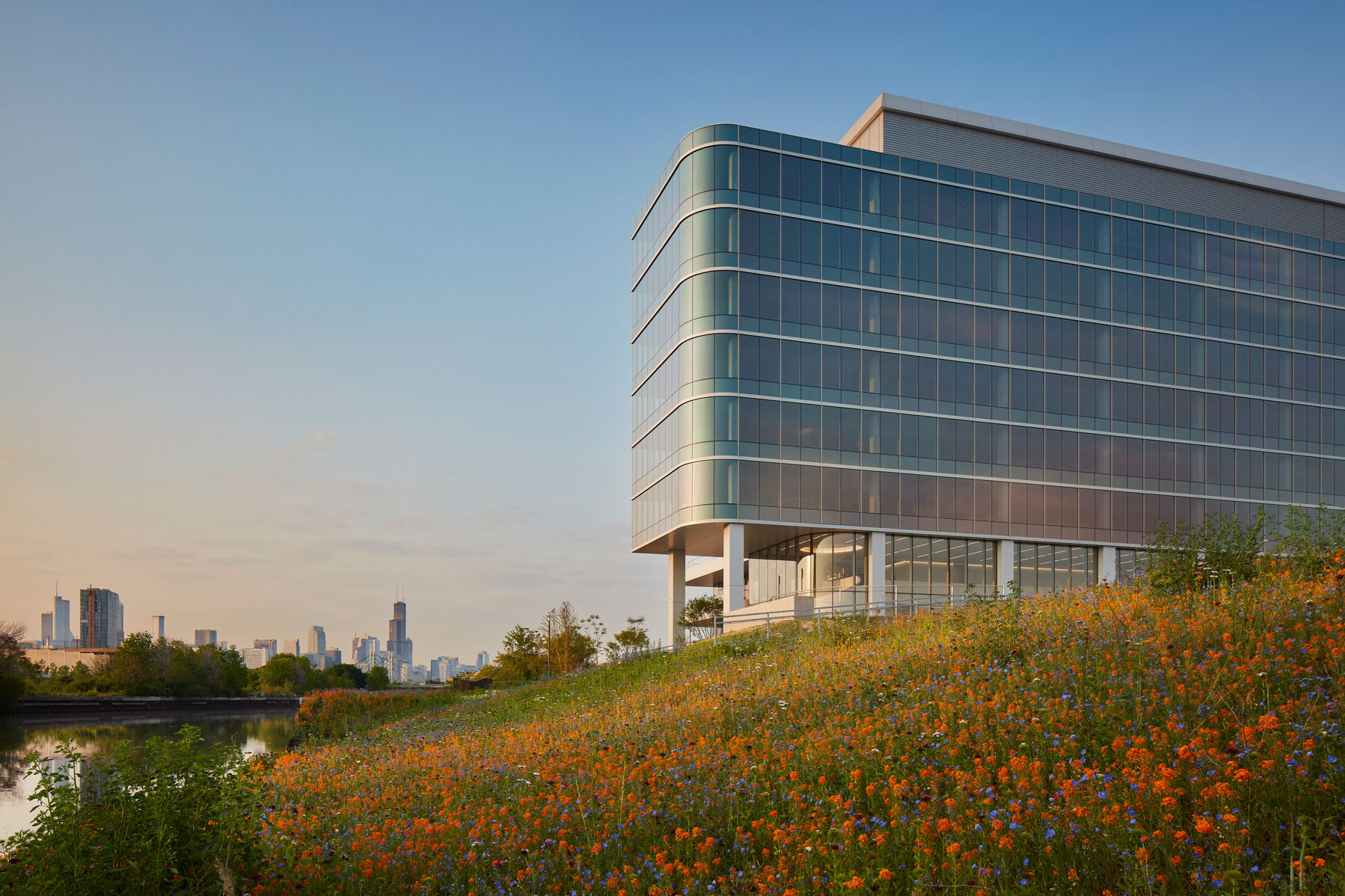
Expanding in accordance with local hydrographic networks and integrating strips of natural green spaces are two strategies that allow cities to grow without increasing their chances of becoming urban heat islands. Photo by Kendall McCaugherty
As cities expand to accommodate population and economic growth, the amount of gray space also grows (typically at the expense of green space), increasing the likelihood of their becoming urban heat islands. This is compounded by the fact that most urban areas undergo concentric expansion—or development that radiates outwards from a central point, similar to the growth rings of trees—which creates extremely dense cities that trap solar heat in mazes of urban canyons.
Rather than radiate outward, experts suggest planning cities in strips or patches influenced by local hydrographic networks, or the arrangement of natural streams and water drainage courses in an area. Cities that grow in this way ultimately stretch over larger areas but naturally incorporate diverse green and blue spaces in their design, reducing their chances of becoming urban heat islands.
Hydrographic planning helps protect and preserve natural habits while also introducing much-needed green space back into our urban environments. “Adding back greenery to our cities not only adds biodiversity but also re-establishes the natural water cycle, such as groundwater recharging, and adds natural cooling due to increased evapotranspiration,” writes Zakrisson.
For more information on how to take action and educate others about the urban heat island effect, visit the EPA’s urban heat island resource page.

